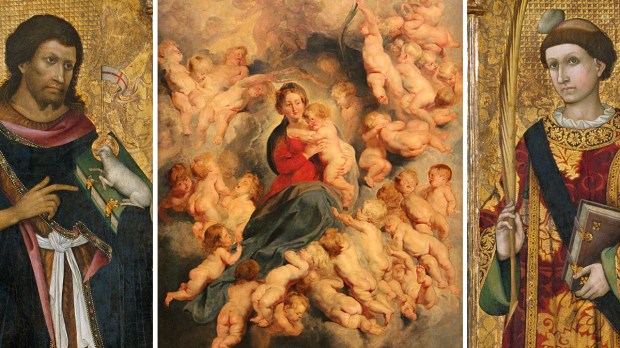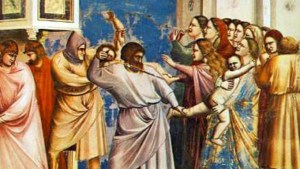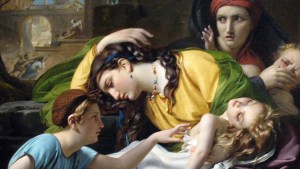The days after Christmas are some of the most peculiar days in the liturgical calendar. In the midst of our celebration surrounding Christ’s birth, we look to the example of the martyrs and forward to the cross.
St. Bernard has a beautiful sermon for the feast of the Holy Innocents, where he connects the three feasts, which don’t appear to be connected in any way.
For the holy One born of Mary did not come in vain, but spread abroad abundantly the name and grace of holiness. Thence surely came the holiness of Stephen, of John, and of the Innocents. It is well for us that these three feasts are associated with the birthday of the Lord, for besides helping us to maintain our devotion, their coming one after another, as a kind of escort makes the fruit of our Lord’s birth more evident.
In these three solemnities, three kinds of holiness can be seen, and I think it would be hard to find among humans a fourth. In blessed Stephen we have a martyr both in will and deed; in blessed John we have the will alone; in the blessed Innocents the deed alone.
He then continues to explain the differences between them all, as well as their spiritual connections.
Stephen was a martyr in human eyes. His willingness to suffer appears most clearly in the fact that on the point of death he was more concerned for his persecutors than for himself. John was a martyr in the sight of the angels who, being spiritual themselves, could see the spiritual proofs of his dedication.
But these, these Innocents, are clearly your own martyrs, O God; because they do not seem either to humans or angels to have earned any reward, your special favour to them is shown with greater clarity. Out of the mouths of children and of babes you have received perfect praise. The angels sang: Glory to God in the highest and peace to people of good will. That indeed is magnificent but I dare to say not perfect praise, which will be found only when He comes who said: Let the little children come to me, for of such is the kingdom of heaven.
At first glance these three feasts may not seem connected, but in the light of the Gospel, they all refract a different light, showing us the way to eternal life.



